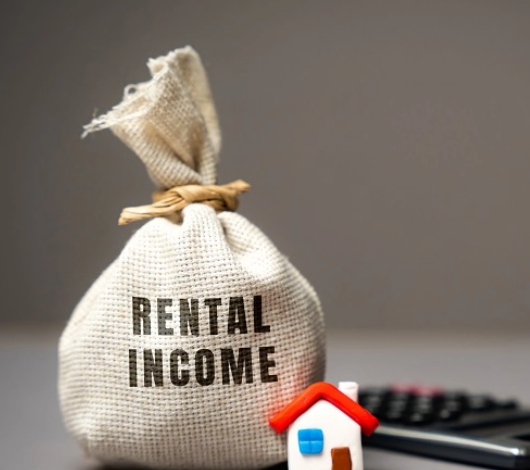How Much Cash Should You Hold in Your Investment Portfolio? A Guide to Managing Liquidity

As a new investor, you may often wonder how much of your investment portfolio should be kept in cash. Having sufficient liquidity is crucial for managing unexpected expenses, but balancing cash reserves with other investments is equally important to ensure your wealth grows over time. Let’s dive into understanding the right percentage of cash to keep in your portfolio, and how you can manage it effectively.
Why Should You Keep Cash in Your Portfolio?
Cash liquidity is essential for several reasons, and having access to liquid assets can provide peace of mind in case of emergencies or unexpected opportunities. Here are the main reasons why cash liquidity is important:
- Meeting Immediate Financial Needs
Unexpected events like medical emergencies or sudden job loss can require immediate cash. Having cash reserves ensures you don’t have to liquidate investments at unfavorable times. For business owners, cash is also needed for operational expenses, such as purchasing raw materials. - Navigating Market Volatility
Investing entirely in stocks or volatile assets can lead to significant risks during market downturns. Having a portion of your portfolio in cash allows you to stay calm during volatile times and take advantage of buying opportunities when the market rebounds. - Risk Management
Cash helps maintain balance in your portfolio, especially if you’re a conservative investor. It offers a safety net to avoid having to sell investments at a loss during a market downturn, allowing for more strategic decision-making. For retirees or those nearing retirement, having a higher percentage of cash in their portfolio ensures that their capital is protected.
How Much Cash Should You Hold in Your Investment Portfolio?
There’s no one-size-fits-all answer, as the amount of cash you should hold depends on your age, risk tolerance, and financial goals. Let’s explore some general guidelines based on different investor profiles:
- Aggressive Investors
If you’re in your 20s or 30s and have a long investment horizon, a smaller portion of your portfolio (around 2-5%) should be in cash. This allows you to take on more risk in pursuit of higher returns, while still maintaining some liquidity for emergencies. - Balanced Investors
If you’re in your 40s or 50s and prefer a mix of growth and income, you should consider holding 10-12% of your portfolio in cash. This provides enough liquidity for near-term needs, like purchasing a car or funding educational expenses. - Conservative Investors or Pre-Retirees
For those in their late 50s to early 60s, a larger cash reserve of 15-20% may be necessary. This ensures you have access to liquid funds for significant life events such as buying a home or covering medical expenses without the need to sell investments in a down market. - Retirees and Pensioners
Once you’re retired or nearing retirement (over 65), you may want to hold 25-30% of your portfolio in cash. This level of liquidity ensures that you can cover living expenses and emergency needs without jeopardizing your long-term financial security.
Options to Hold Cash Effectively
Simply keeping cash in a regular savings account can be detrimental due to inflation eroding its value over time. Here are better alternatives for holding cash in your investment portfolio:
- High-Yield Savings Accounts
Look for high-yield savings accounts that offer better interest rates than standard savings accounts. These accounts are ideal for building emergency funds while earning a higher return on your cash reserves. - Money Market Funds
Money market funds invest in low-risk, short-term debt instruments and offer higher interest rates than regular savings accounts. They are a safe option for preserving your capital while maintaining liquidity. - Certificates of Deposit (CDs)
If you can lock your money away for a set period, CDs are a great option. They offer higher interest rates than savings accounts, but they come with penalties for early withdrawal. - Insurance Products
Consider using insurance products, such as life insurance or annuities, to combine financial security with investment opportunities. Some insurance products offer cash value accumulation, allowing you to access funds when needed while benefiting from tax advantages.
The Pros of Holding Cash
Holding cash in your portfolio offers several advantages, including:
- Liquidity
Having cash gives you the flexibility to cover short-term expenses and make purchases without needing to sell off other investments. - Reduced Dependency on Debt
With cash reserves, you’re less likely to rely on credit cards or loans, reducing your exposure to high-interest debt.
The Cons of Holding Too Much Cash
While cash provides security, holding too much in cash can have its drawbacks:
- Lower Returns
Cash doesn’t generate high returns compared to other investment options like stocks or bonds. Savings accounts typically offer low interest rates, which may not outpace inflation. - Inflation Erosion
Inflation can erode the purchasing power of cash over time. If you hold too much cash, its value may diminish due to rising prices. - Missed Opportunities
By keeping too much cash in low-yield investments, you miss out on potentially higher returns from other asset classes. It’s important to strike the right balance between cash and growth-oriented investments.
Conclusion
Managing cash liquidity in your investment portfolio is all about balance. While it’s important to have enough cash on hand to meet immediate needs and manage risks, holding too much cash can limit your portfolio’s growth potential. As an investor, consider your risk tolerance, financial goals, and time horizon when deciding how much cash to keep in your portfolio. By diversifying and strategically managing your liquid assets, you can achieve long-term financial success while staying prepared for life’s uncertainties.




